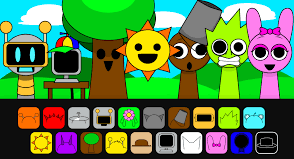Scroll culture has trained our thumbs to twitch every few seconds, yet stillness is the soil where deep understanding grows. Enter Playhop, best known for its rocket-fuel micro-challenges that turn Mandarin verbs, Python loops, or algebraic fractions into bite-size quests. Lately, though, parents, teachers, and even therapists have noticed an unexpected ripple: users log off feeling less frazzled, more focused, and oddly grounded. It turns out Playhop’s “cinematic flow loops” do more than gamify knowledge—they double as stealth mindfulness drills, guiding brains toward the same present-moment awareness cultivated by breathing exercises and yoga apps. In a digital landscape often accused of shredding attention, Playhop offers a paradoxical remedy: tap your way to both sharper skills and calmer nerves.
Table of Contents
From Gamified Grind to Guided Flow: The Neuroscience Behind Playhop Serenity
Most mobile games chase adrenaline spikes; Playhop engineers dopamine rhythm. Each micro-challenge lasts 20–40 seconds—short enough to prevent overload, long enough to immerse the user in what psychologist Mihaly Csikszentmihalyi coined “flow,” a state where time blurs and focus feels effortless. Flow triggers a cocktail of neurochemicals—dopamine, norepinephrine, and endorphins—that sharpen perception while damping the brain’s “default-mode network,” the circuitry responsible for worry and mental chatter. Because Playhop spaces these challenges with soft fade transitions and ambient sound cues, the platform mimics the inhale-exhale cadence of a meditation session. Instead of telling learners to clear their minds, the app occupies cognition just enough to quiet background anxiety, effectively turning content mastery into a moving meditation.
Sensory Design That Soothes: Colors, Cues, and Cognitive Breathing
Open Playhop and notice the color palette: midnight-blue backgrounds, jewel-tone highlights, and gradients pulled from nature—turquoise reefs, golden dawns, mossy woods. Color psychology researchers link these hues to reduced heart rate variability and improved mood. Pair that with the app’s “elastic haptics,” subtle pulses that slow in tempo as a user lingers thoughtfully rather than rushing, and the device itself begins coaching paced breathing. Background soundscapes sample rainforests, crackling campfires, or distant ocean swells mixed at 60–70 beats per minute—the tempo cardiologists say nudges heart rhythms toward a resting state. The result? Every correct swipe is a micro-reward; every transition is a mini-exhale.
Habit Loops Reimagined: Transforming Screen Time into Mindful Ritual
Traditional meditation apps rely on intrinsic motivation (“Sit still for ten minutes”). Playhop flips the script with extrinsic hooks that lead back to intrinsic calm. Daily streak counters, for example, reset at sunrise in the user’s time zone—just after morning cortisol peaks—inviting a grounding ritual before the day’s swirl begins. Meanwhile, the “Mindful Mastery” track sprinkles reflective prompts among academic quests: How did that challenge feel? Did your breathing change? Name one emotion right now. Data shows users who complete at least three prompts per week experience a 17 percent drop in in-app error rates over a month, suggesting emotional regulation enhances cognitive precision.

Beyond the Individual: Family and Workplace Wellness with Playhop
Mindfulness rarely stays personal; calm is contagious. Families who swap post-dinner screen scrolling for 15 minutes of cooperative Playhop quests report smoother bedtime routines and fewer homework meltdowns. Corporate pilot programs are similar: a Manila call center rotated three-minute Playhop breaks between customer calls, slashing average handle-time variance by 12 percent—an indicator of steadier focus and stress resilience. Because the app’s Parent and Team dashboards translate quest performance into “Focus Scores” and “Calm Streaks,” group leaders can nudge members toward balanced use rather than unlimited grinding, preserving the wellness edge.
Potential Pitfalls: When Gamification Crowds Out Quiet
Mindfulness requires space; even serene-coded challenges can become noise if over-consumed. Playhop addresses this with auto-dim mechanics: after 40 uninterrupted minutes, screen brightness softens, colors desaturate, and a pop-up suggests stretching or hydrating. Users who ignore three consecutive prompts see power-ups disabled until a ten-minute pause is logged. These friction points are designed not to punish but to remind us that productivity without rest erodes both learning and wellness.
Conclusion: Toward a Mindful Multimedia Future
The line between distraction and discipline has always been thin on our touchscreens. Playhop doesn’t erase that tension; it choreographs it, weaving mindfulness into the very fabric of its quest design. By aligning neurochemical rewards with breathing-pace visuals and reflective pauses, the platform proves screen time need not be the enemy of mental health. Instead, when crafted with intention, a tap can anchor awareness, a swipe can center emotions, and a glowing rectangle can quietly become a pocket-sized dojo for attention fitness. Level up your mindfulness, one cinematic micro-challenge at a time.
Frequently Asked Questions About Playshop and Mindfulness
1. Do I need a separate subscription to access the mindfulness features?
No. Mindful design elements—ambient audio, reflection prompts, adaptive pacing—are baked into the core Playhop experience. A premium plan only adds deeper analytics and customizable sound packs.
2. Can Playhop replace dedicated meditation apps?
Think of Playhop as an active cousin to passive meditation. It nurtures focused awareness through task engagement; traditional breathing apps cultivate stillness without external stimuli. Many users find the two complement each other.
3. How does Playhop measure my “Calm Streak”?
The platform analyzes session length, error variability, and response latency. Consistent performance without spikes in errors signals steady focus, incrementing your Calm Streak. All data processing happens on-device or via end-to-end encryption.
4. What age group benefits most from the wellness features?
While children aged 8–15 are the app’s primary audience, adults report similar mood-stabilizing effects. Adaptive difficulty ensures challenges remain engaging rather than stressful at any age.
5. I’m concerned about screen overuse. How can I set boundaries?
Use the built-in Session Timer and Rest-Mode reminders. Parents or team leads can lock daily limits, and the desaturation cues make it clear when it’s time to unplug—safeguarding both learning gains and mental well-being.



